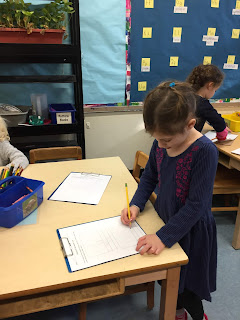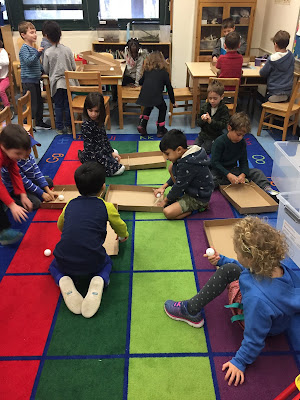In our new unit 1st graders are exploring the properties of matter. We are starting by observing and describing how 7 different objects look, feel and sound.
 |
The block sounds loud when it's tapped on the table and the triangle
sounds "flicky". |
 |
| The fabric is blue and soft. |
 |
| The screw is hard and rough. |
 |
| The popsicle stick is straight and so it the screw. |
Next, we played a sorting game where partners choose two solids that share the same property - flexible, rigid, hard, soft, rough, smooth, transparent or opaque.
 |
The triangle and the popsicle stick are both
both opaque. |
 |
| The triangle and the wire are both flexible. |
 |
| The fabric and the wire are both flexible and smooth. |
 |
| Playing the sorting game. |
























































